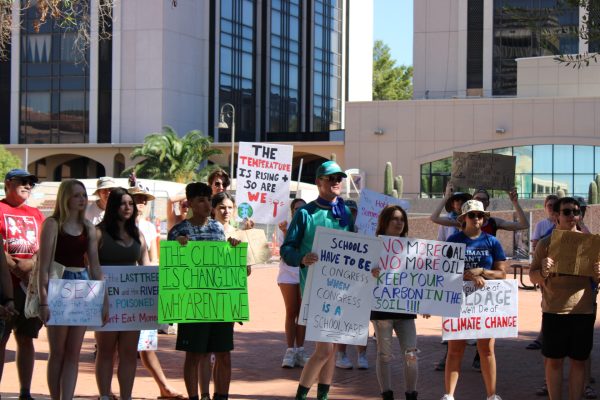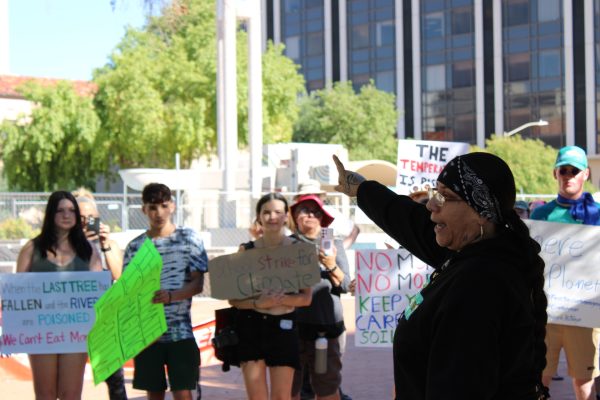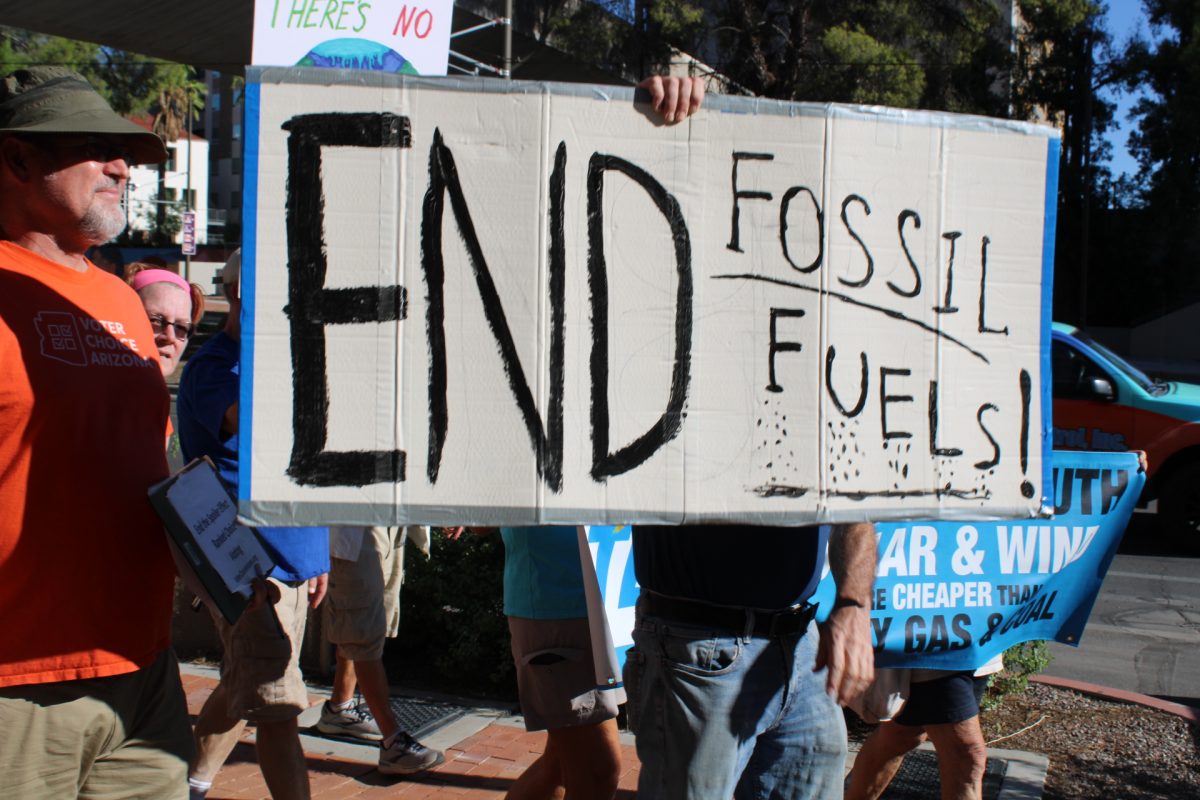Students and community members gathered at Tucson’s City Hall Friday, Sept. 15, to demand the Arizona government do more to address climate change. This demonstration was one of over 500 across 54 countries as part of a Global Climate Strike Day led by Fridays for Future, a youth-organized climate movement inspired by Swedish activist Greta Thunberg.
The protest was organized by two local youth-led activist groups: UArizona Divest and the Arizona Youth Climate Coalition. Their full list of demands can be found on the AZYCC Instagram account.
The president of UAZ Divest, Samantha Wetherell, made it clear that the protest aimed to urge not only local and state governments, but also the University of Arizona, to take action. Despite acknowledging that the UA’s Sustainability & Climate Action Plan has merit, Wetherell said that it isn’t enough.
“[The university] is doing great things with the Climate Action Plan right now and we’re very excited to see how that progresses […] but we still think there needs to be more. [We] want advocacy for our asks because we want to align the [UA]’s finances with its sustainable mission, fully and entirely,” Wetherell said.

A major goal of UAZ Divest is to convince the UA to stop investing in fossil fuels, with their website noting that the university had $64 million invested in fossil fuels in 2019. The Sustainability & Climate Action Plan does not seem to commit to a plan for these investments moving forward but is aiming to achieve carbon neutrality by 2040.
AZYCC, co-organizers of the protest, aligned with UAZ Divest’s agenda in a speech from its outreach director, Tanish Doshi.
“We are asking for universities to divest from the millions of dollars they have invested in fossil fuels,” Doshi said.
Along with collaboration between UAZ Divest and UA students, community members outside of these organizations stood in solidarity with the strike. Representatives from local, like-minded activist and volunteer groups further illustrated a united front by advertising their own approaches to promoting climate action.
Speaker Vana Lewis with the Arizona Center for Empowerment urged the crowd to consider how quickly the issue of climate change could either rapidly improve or become irreversible.
“What a time to exist that in the blink of an eye, we could be on the catalyst of change in either direction. […] We’re tainted, we’re hurt, we’re wounded, we’re infected — if we don’t heal what is wounded then we will hurt everything else,” Lewis warned through a megaphone.
Lewis acknowledged there is no one person or entity to be blamed for the climate crisis.
“I would love to point a finger at one direct person, but as you know it’s all of us,” Lewis said. “At the same time, there’s a corporate world that has robbed people and the planet. If there’s a direct source, it is corporate America.”

Voter Choice Arizona, a non-partisan volunteer group working to increase voter choice in elections, showed face at the protest to promote their own method of advancing the climate movement: changing the election system.
Organizing director Betsy Boggia explained that ranked-choice voting allows voters to “rank candidates in order of preference. It eliminates the spoiler effect, and the winner has a true majority.” Boggia also explained that ranked-choice voting “motivates candidates to address the issues that matter to people, like water and the environment. The majority of people in Arizona care about water, they care about the environment — the problem is how we elect our leaders.”
Annabel Close, co-lead of Tucson’s AZYCC chapter, made it clear that organized young people are making tangible strides when it comes to changing local climate policy.
“Because of our climate work, we were chosen as community partners for the Tucson Climate Action Adaptation Plan. We got to help edit the plan on every stage of its creation. We also lobbied for Tucson to declare a climate emergency, which they ended up doing in 2020,” Close said.
More information on AZYCC and UAZ Divest can be found on their respective Instagram accounts @azyouthclimate and @uazdivest.
Follow the Daily Wildcat on Instagram and Twitter (X)















